-
How to Read Newspapers
from the 1930s and 1940s -
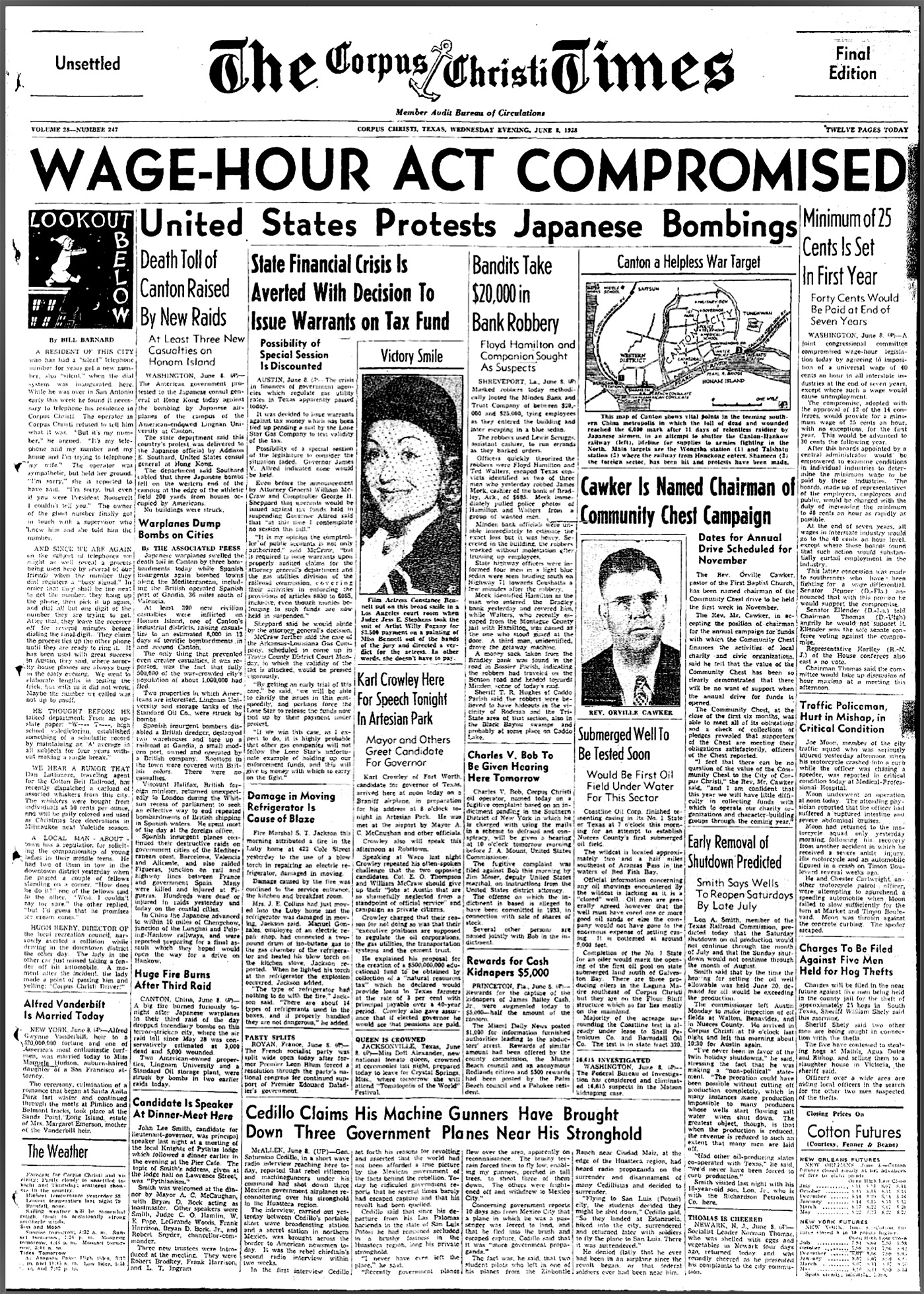
-
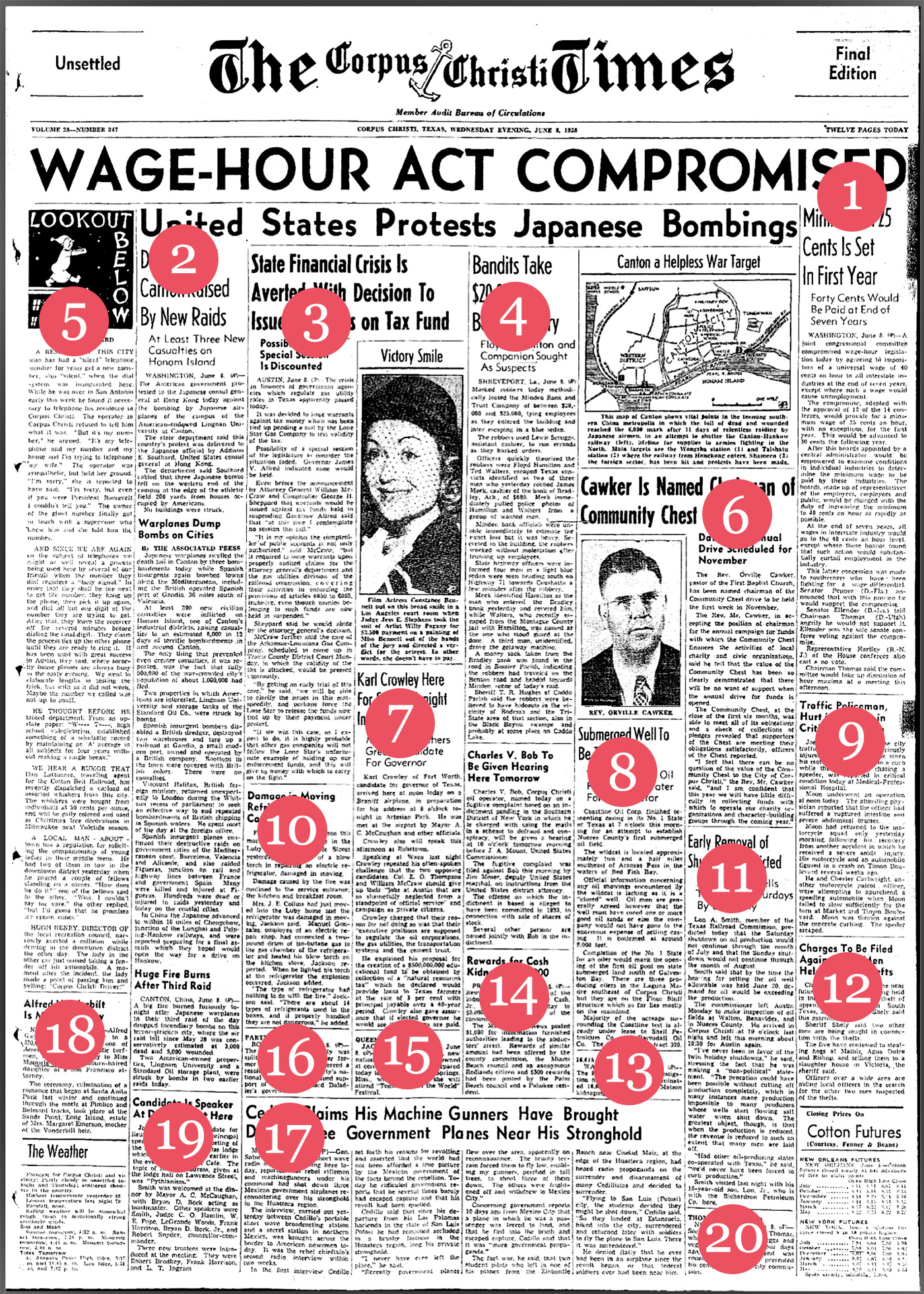
-
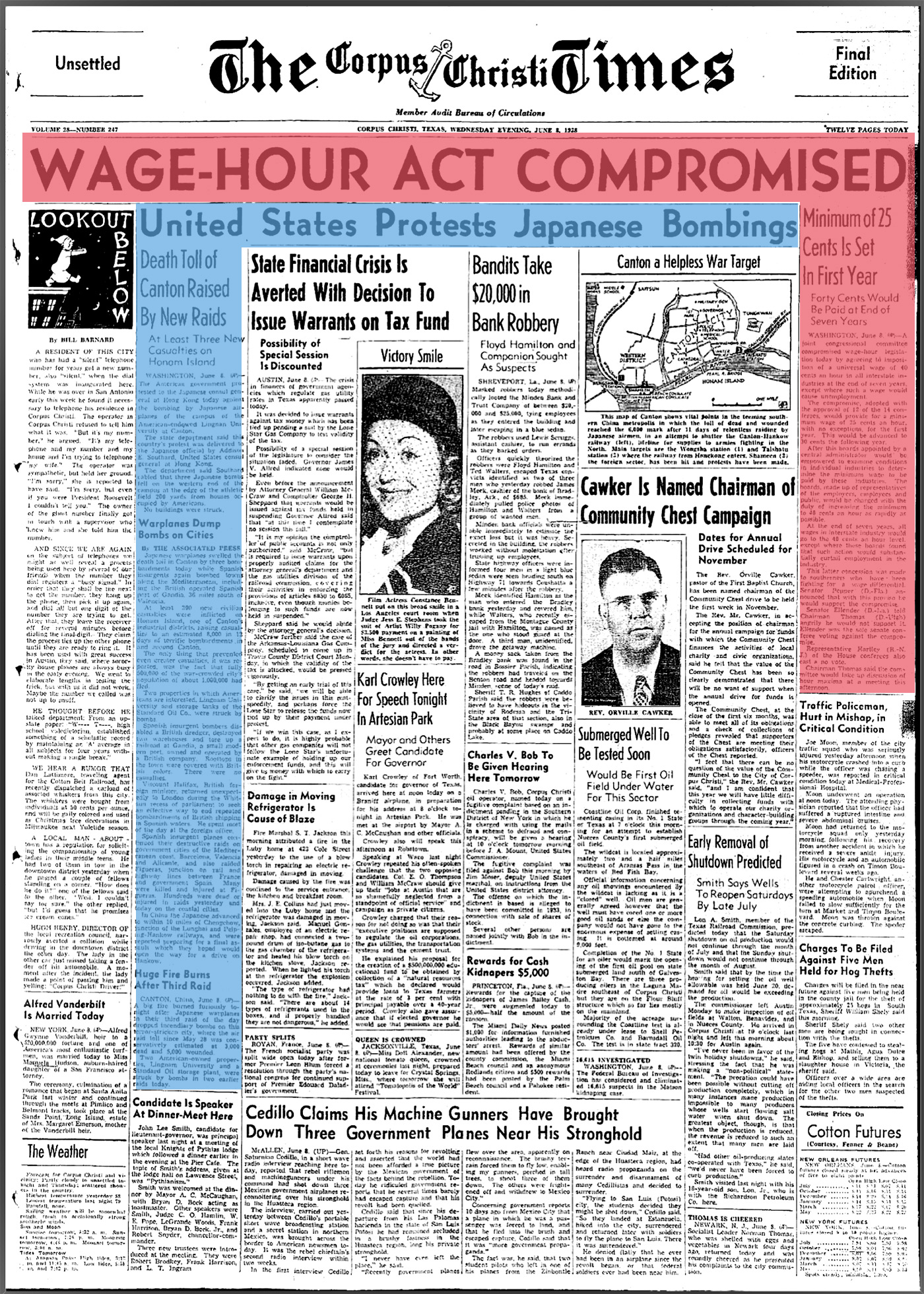
-
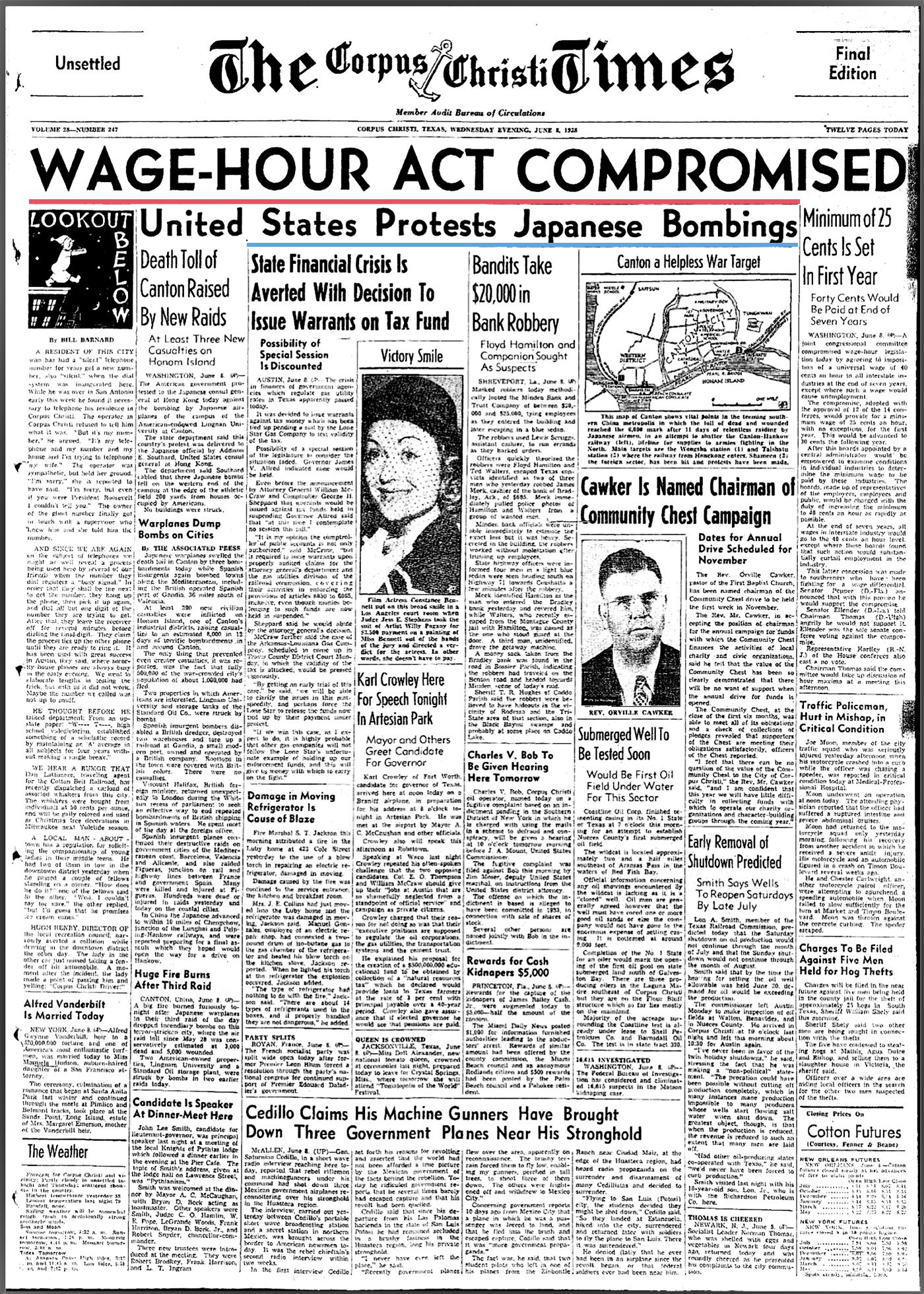
-
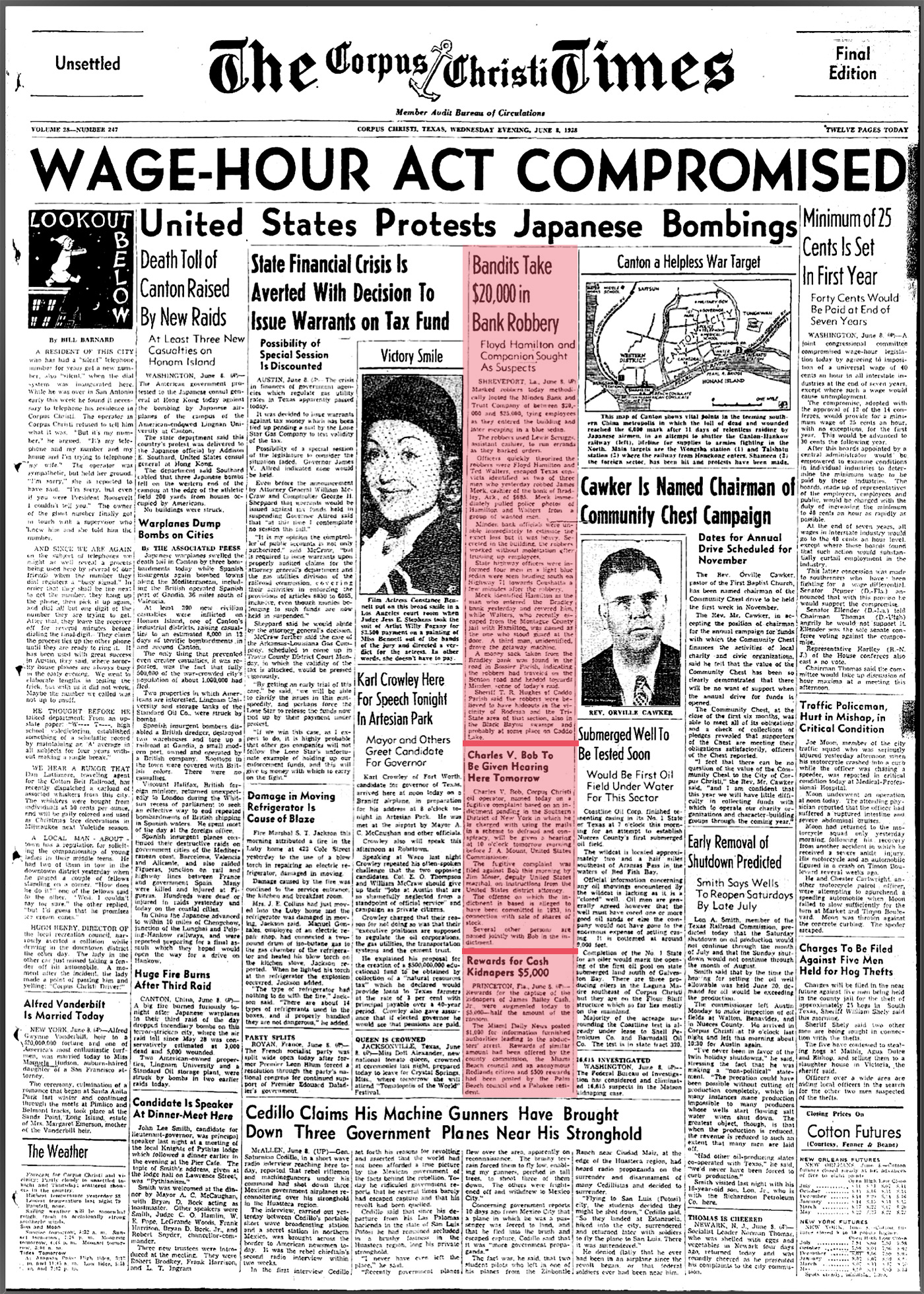
-
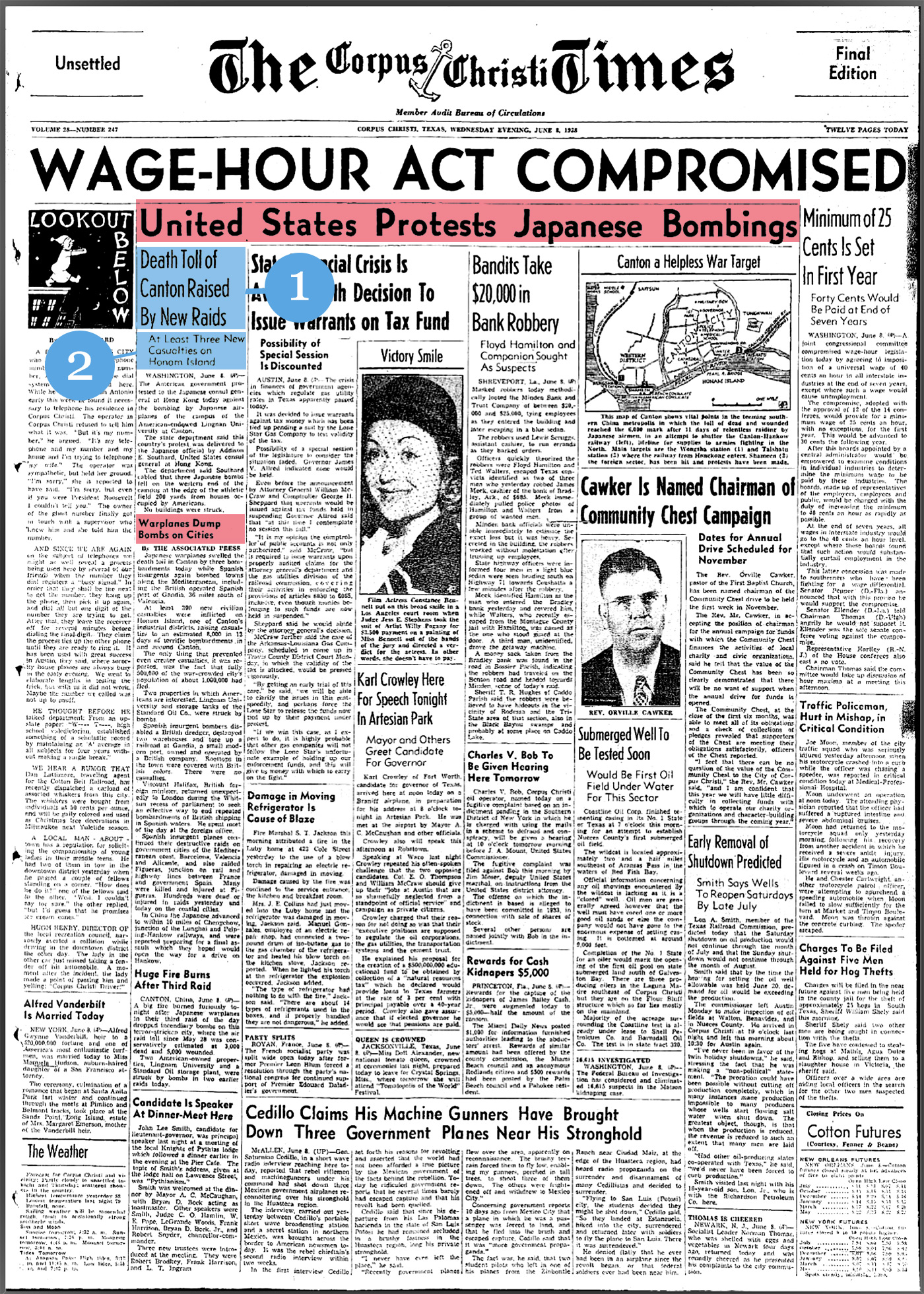
-
Keep Scanning!
The more papers you view, the easier scanning becomes.
If you have a specific question, feel free to reach out to us.
- 1 -
The Front Page
Without the Internet or 24-hour cable television news, newspapers offered one of the most immediate sources of news. Editors used front pages to provide readers with a scannable overview of what they felt to be important and interesting things happening in their communities and the world.
- 2 -
Show as much news as possible
To provide the most complete overview possible, newspaper editors placed as many stories as they could on the front page. There are 20 stories (labeled with red markers), a standalone photo ("Victory Smile"), stocks, and the weather on this front page.
- 3 -
Doglegs
You may have noticed that the stories are not organized in a grid and instead wrap around each other (see the stories highlighted in red and blue). A headline might extend across multiple columns, and the text of that article runs down the page in a single column. This is called a "dogleg", and it was a layout technique used frequently at the time due to the limitations of typesetting tools.
- 4 -
Look for the lines
So without beginning to read every story, how did editors indicate which articles belonged to each headline? They used lines, or "rules" as they liked to call them. Look again at these dogleg stories. A solid black line (highlighted in red) separates the "Wage-Hour Act" story on this page from other stories. The line stops at the column that contains the text that is meant to be read with the "Wage-Hour Act" headline. The same technique is used for the "United States Protests Japanese Bombings" story (see blue line).
- 5 -
One Column, Many Stories
Lines are also used to show when one article ends and another begins in the same column. (The column highlighted in red has three stories in it — the lines between stories have been highlighted in red as well.)
- 6 -
Headlines Written for Space
Newspaper editors needed to fill all of the available space on every page. A quick trick editors used to do this was to write additional sub-headlines for stories. Notice how the United States Protests Japanese Bombings story has two sub-headlines.
Another trick editors used to fill space was to string together related stories about the same topic under the same headline, as they did with Warplanes dump bombs on cities. You'll know the stories are related when they are not separated by a rule. If you keep scanning beneath the warplanes story, you'll see yet another related article, "Huge Fire Burns After Third Raid". Notice how there is no rule (line) between it and the story above it.